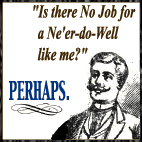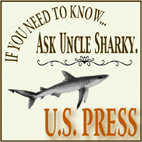
Vol. 2, Issue 2, January 13, 2004







Scholars Debate Significance of "Dickens Code"

The perennially popular works of the noted author Charles Dickens, who wrote such classics as A Tale of Two Cities and A Christmas Carol, are receiving a new focus with the publication of an article asserting that the works of Charles Dickens may bear hidden significance.
"Our statistical analysis conclusively demonstrates that the works of Dickens contain hidden descriptions of key events in English history," said author Jeremy Newton, who published his findings in the Winter 2003 issue of the scholarly journal The Dickensian. "I must say, the mention of Queen Elisabeth's corgis was rather unexpected."
Michael Drosnin's bestselling 1997 book The Bible Code thrust the issue of hidden coding into the spotlight by asserting that the Hebrew Bible contains a complex code revealing events that took place thousands of years after the Bible was written. Drosnin arranges the 304,805 Hebrew letters of the Bible into a large array, and a computer looks for matches to selected names or words by stepping to every nth letter in the array.
Statisticians have applied his technique to other secular works as controls, but this is the first time meaningful results have been found in a non-Biblical source.
"This does cast rather a puzzling light on what we thought was fairly well-known material," said University of Cambridge Professor of History Chester Stuart. "It beggars the question as to why on earth Dickens would have slipped a coded reference to the 1992 Arsensal [soccer team] record into The Pickwick Papers. But then Dickens always was an odd duck, don't you know."
According to Newton's article, his analysis reveals coded messages included in every one of Charles Dickens' works, including the following:
-Great Expectations: Prediction of Tony Blair's 2001 election victory, with margin of victory
-Oliver Twist: The complete text of the Magna Carta
-A Tale of Two Cities: Prediction of the Battle of Britain in World War II
-The Mystery of Edwin Drood: Alphabetic list of Queen Elisabeth II's corgis
-Barnaby Rudge: Recipe for Yorkshire pudding
"What is especially puzzling is the fact that Dickens was essentially paid by the word," said Stuart, "and published his works serially, according to punishingly strict and frequent deadlines. So it defies comprehension that he could have managed to insert these codes deliberately."
Sales of Dickens' works have increased sharply in the UK, though as all the codes unveiled to date deal exclusively with English history, interest outside the UK has been marginal.
"I really have no explanation for this," said Newton. "But I'll tell you this: Prince Charles had better watch out for stray weather-balloons in 2006 if Nicholas Nickleby has anything to say about it."






